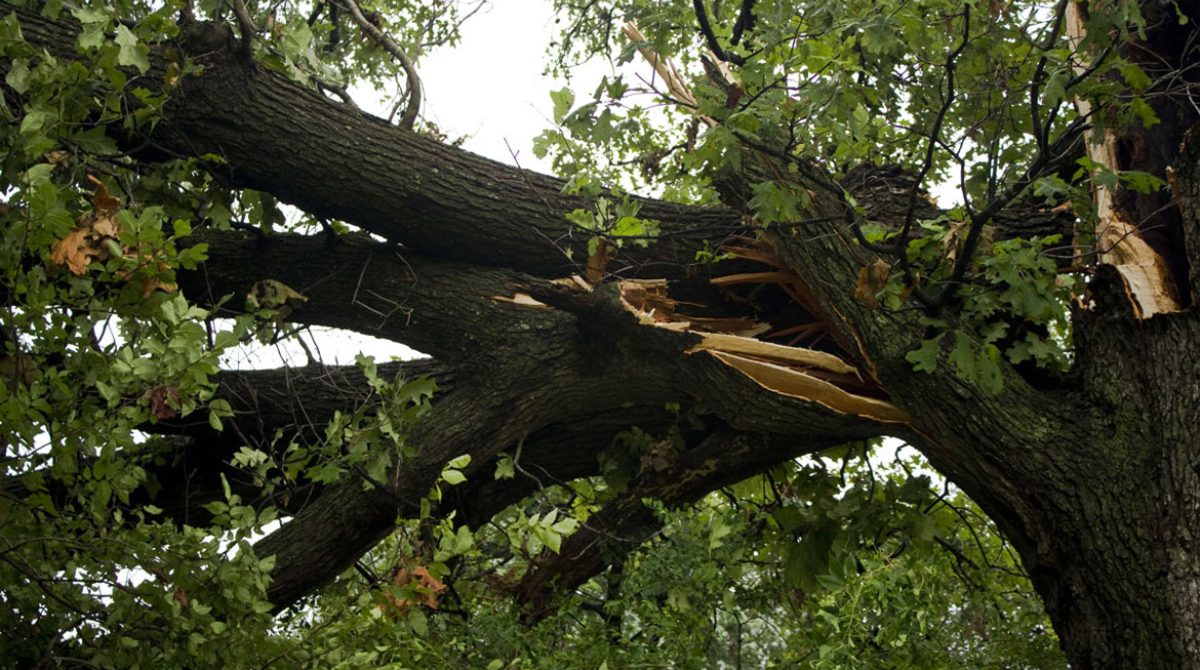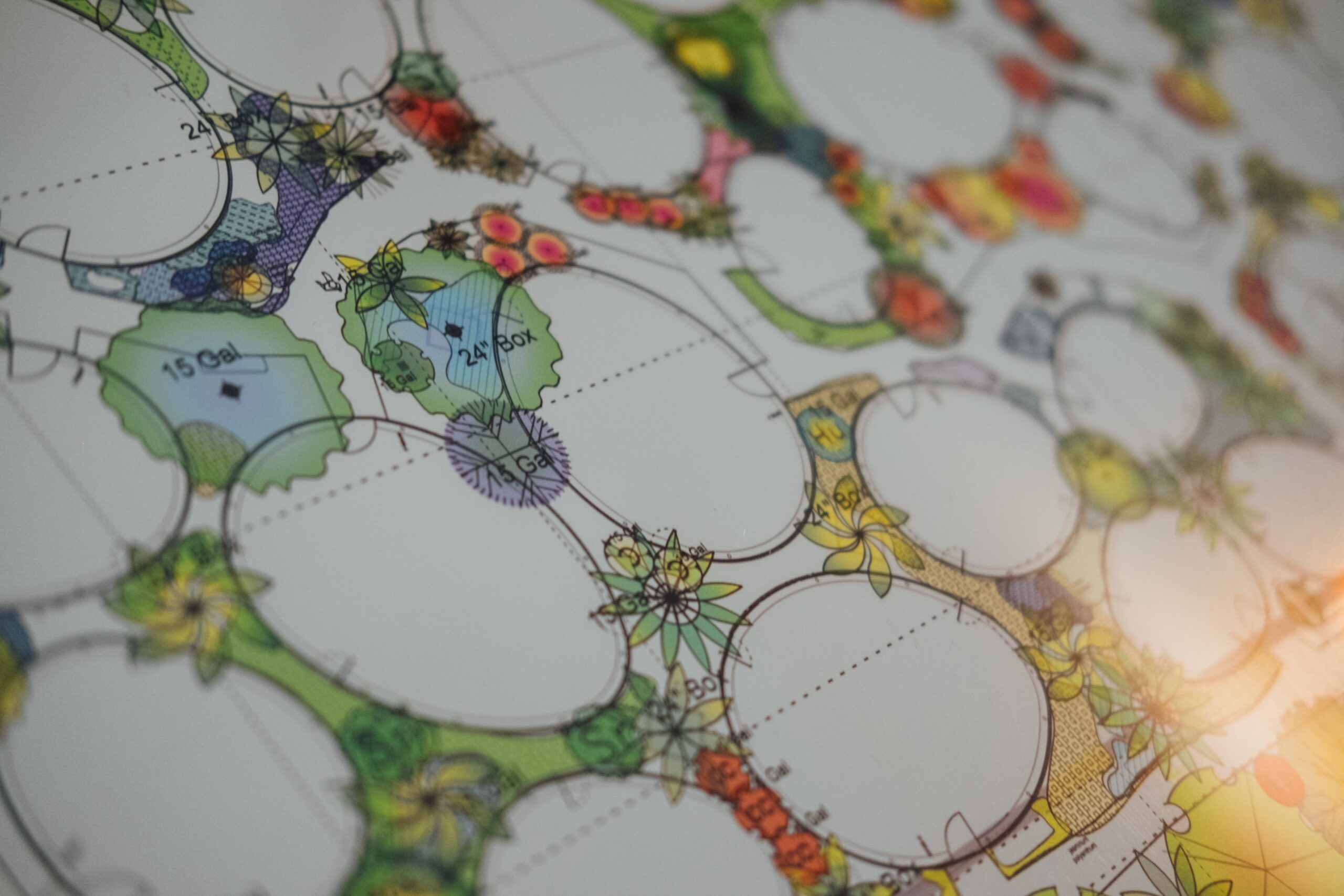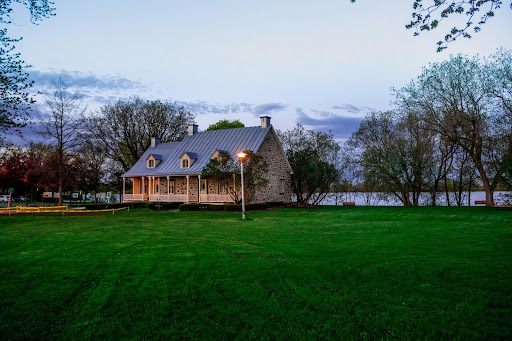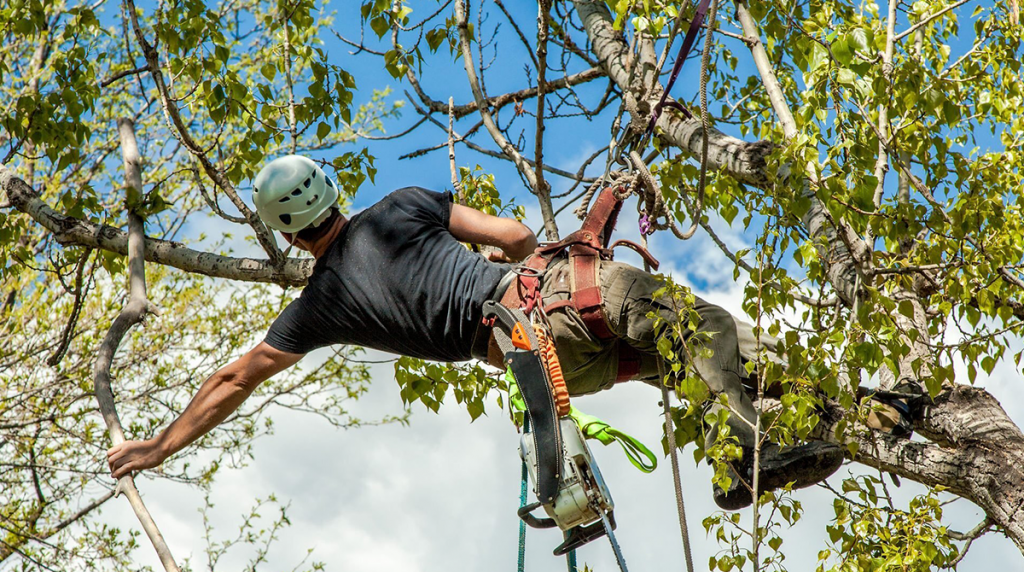
How Does Tree Pruning Reduce Storm Damage?
Date August 03, 2022
Category
As we head into summer storm territory, North Texas trees are especially vulnerable to storm damage after experiencing extreme heat. While we can’t completely prevent damage from powerful storms or Acts of God, there are ways to prepare your trees and increase their resilience to storm damage. In this blog post, we’ll discuss the effects of storm-damaged trees and how proper tree pruning and trimming can help minimize the impact of a summer storm on your landscape.
How Does a Storm Damage Trees?
Powerful storms can cause catastrophic damage to communities, including downed powerlines, broken windows, uprooted trees, and worse. Storms affect trees from the root to the top of the canopy. The main culprit for storm-damaged trees is strong winds. However, rain and flooding can loosen the soil around tree roots. The result can be a toppled tree as the wind pulls the roots out of the ground.
Newly planted trees are at significant risk of toppling, but extreme winds can cause broken branches or snapped trunks for even the most established, mature trees.
This is extremely dangerous for residential and commercial property owners since a broken branch can snap at any time, severely injuring passersby or damaging structures.
You may be thinking: should I remove my trees to minimize the risk of storm damage?
The answer is no. While storms can cause damage to trees and the surrounding area, neighborhoods with tree coverage and correctly pruned trees can protect structures and landscapes from storm damage.
The key is to have trees that are prepared for storms to protect from storms.
Potential Storm Damage Risk Factors
A step you can take as a homeowner to prevent the worst of storm damage is to examine your trees to determine if they are a potential risk.
Some of these signs include:
- Dead or damaged branches – cracks or splits in tree branches increase the risk of them snapping in the event of a storm.
- Severely leaning trees – unbalanced trees or trees leaning severely to one side are at high risk of falling over and causing critical damage to structures, property, and people.
- Overly thick canopy – trees with extremely dense canopies create resistance to the wind.
- Improperly pruned trees – trees with excessively pruned interior branches can be unstable.
- Poor root system – trees that have not developed a robust root structure or newly planted trees that are not firmly rooted in the ground are at high risk. Look out for trees with girdling roots or roots that have been damaged or cut from construction.
- Problems with tree structure – homeowners may not be able to identify structural issues affecting the tree’s stability, so it’s best to consult an ISA Certified Arborist to help you determine if your tree is at risk. However, you can check if some branches rub against each other or if your tree has V-shaped crotches.
- Decaying or diseased trees and tree branches – dying branches or decaying tree trunks are less stable, weaker, and more vulnerable to breaking.
- Topped trees – tree topping is when a tree’s branches have been cut to nubs haphazardly and without purpose, and new growth is left unable to assume the terminal role. Tree topping can create severe safety hazards and dramatically shorten a tree’s life.
If your trees display any of these characteristics, contact an ISA Certified Arborist for assistance today.
How Tree Pruning Can Reduce Storm Damage
Properly pruning mature trees ensures that wind and rain can blow through the canopy without issue. Improperly maintained trees create resistance when the wind blows through the canopy, leading to bending and snapping, which is how most damage occurs.
By keeping your trees properly pruned, you can significantly reduce storm damage and increase the overall safety of your property and landscape. Corrective pruning can mitigate issues like dead branches, decaying wood, or overhanging limbs, which increases the risk of damage.
Proper tree pruning and trimming require extensive training and experience. Removing branches can be dangerous and must be done strategically and accurately so that the tree receives maximum benefits. Improper pruning causes damage to the tree’s integrity and can create long-term problems.
For the best tree trimming and pruning services in Dallas/Fort Worth, contact TreeNewal’s tree care specialists.
How to Care for Storm-Damaged Trees
Repairing trees that survive a powerful storm and restoring them to a healthy condition is vital. Before broken branches are removed, they must be examined carefully so that the proper pruning method can be used to minimize further damage from pruning cuts. It stands to say that most homeowners don’t have the skill set to know how to make precise and accurate cuts to help the tree. Always leave tree trimming and pruning to professional tree surgeons and certified arborists.
How TreeNewal Can Help
As we head into this transitional time of year, consider the benefits of preventive or corrective tree pruning and how it can prevent significant storm damage. Investing in tree care services today can help you save in the long run.
TreeNewal’s ISA Certified Arborists can help you assess the condition of your tree and provide expert advice on tree storm protection. Our tree surgeons have the skills to ensure all tree pruning and trimming efforts promote healthy, lasting trees.
For all your tree care services, get in touch with TreeNewal and enjoy tailored tree care advice, tree trimming and pruning, tree removal, and more.
If you need advice or assistance with tree pruning, get in touch with our ISA Certified Arborists at TreeNewal and enjoy tailored tree care services.
To learn more about How Does Tree Pruning Reduce Storm Damage?, call our Argyle and Southlake-based teams
at (817) 592-6846 or send us a message.
We’re a little different than the average tree services company.
Learn more about TreeNewal’s ISA Certified Arborists!
Our Dallas/Fort Worth-based tree doctors can explain how sustainable tree care services add more value to your bottom line.
Healthy trees, healthy lives.








